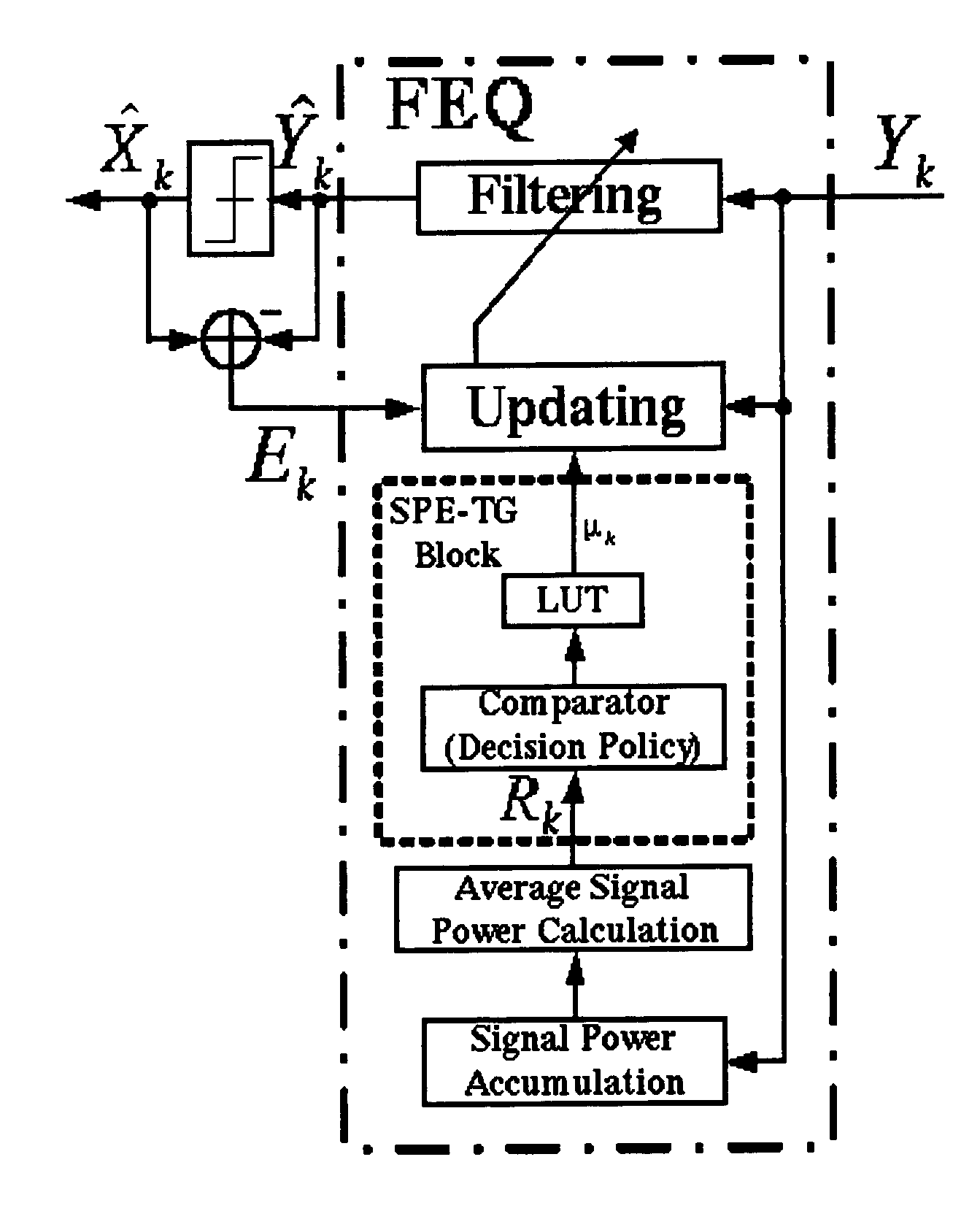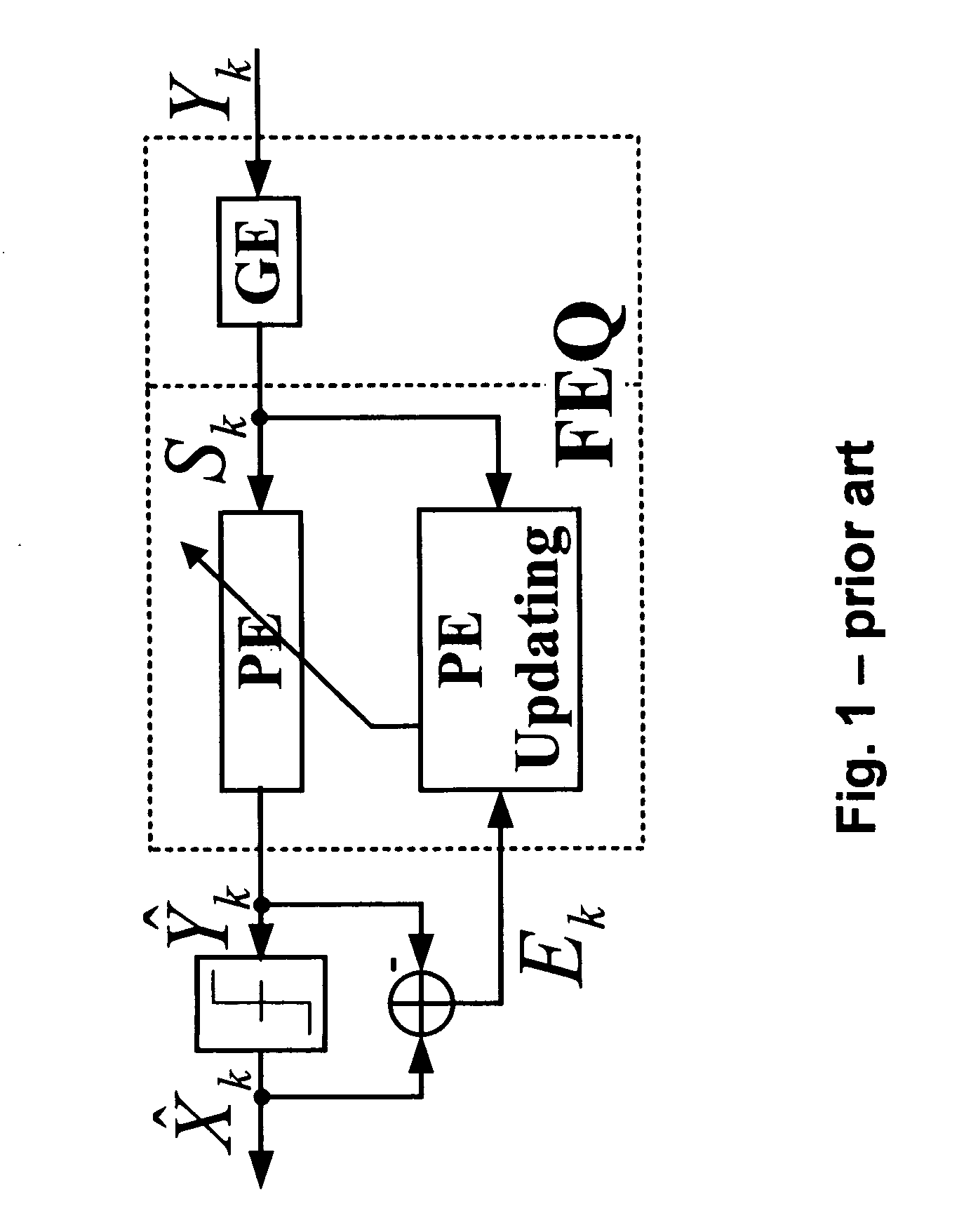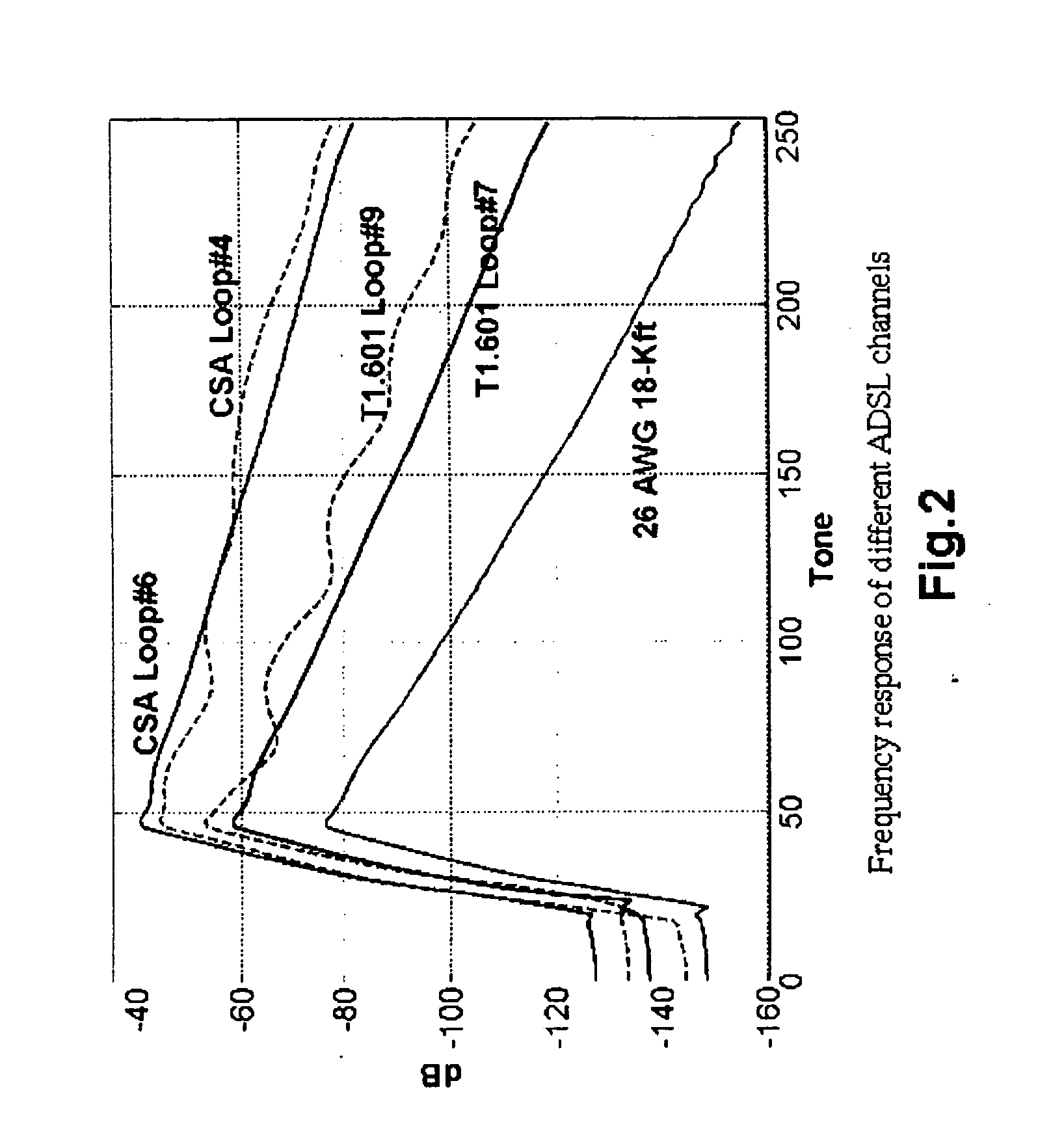On-line step-size calculation using signal power estimation and tone grouping of the frequency-domain equalizer for DMT-based transceiver
a frequency-domain equalizer and signal power estimation technology, applied in the field of methods, can solve the problems of reducing the real-world effect and reliability of negotiation, consuming significant processing resources, and complex methods for calculating feq
- Summary
- Abstract
- Description
- Claims
- Application Information
AI Technical Summary
Benefits of technology
Problems solved by technology
Method used
Image
Examples
Embodiment Construction
[0021] Reference will now be made in detail to the preferred embodiments of the present invention, examples of which are illustrated in the accompanying drawings. Wherever possible, the same reference numbers are used in the drawings and the description to refer to the same or like parts.
[0022] According to Widrow et al., “Stationary and Nonstationary Learning Characteristics of the LMS Adaptive Filter,” Proceedings of the IEEE, vol. 64 no. 8, pp 1151-1162 (incorporated herein by reference), the bound of the step-size is inversely proportional to the total of tap signal input power, and must satisfy the criteria: 0<μ<2total of tap signal input power(eq 1)
[0023] Essentially, the LMS algorithm is an instantaneous estimation to approximate the exact gradient for adaptation. The instantaneous gradient estimation leads to the gradient noise, which gives rise to the misadjustment. Therefore, considering the misadjustment effect, the criteria of (eq 1) can be reformul...
PUM
 Login to View More
Login to View More Abstract
Description
Claims
Application Information
 Login to View More
Login to View More - R&D
- Intellectual Property
- Life Sciences
- Materials
- Tech Scout
- Unparalleled Data Quality
- Higher Quality Content
- 60% Fewer Hallucinations
Browse by: Latest US Patents, China's latest patents, Technical Efficacy Thesaurus, Application Domain, Technology Topic, Popular Technical Reports.
© 2025 PatSnap. All rights reserved.Legal|Privacy policy|Modern Slavery Act Transparency Statement|Sitemap|About US| Contact US: help@patsnap.com



